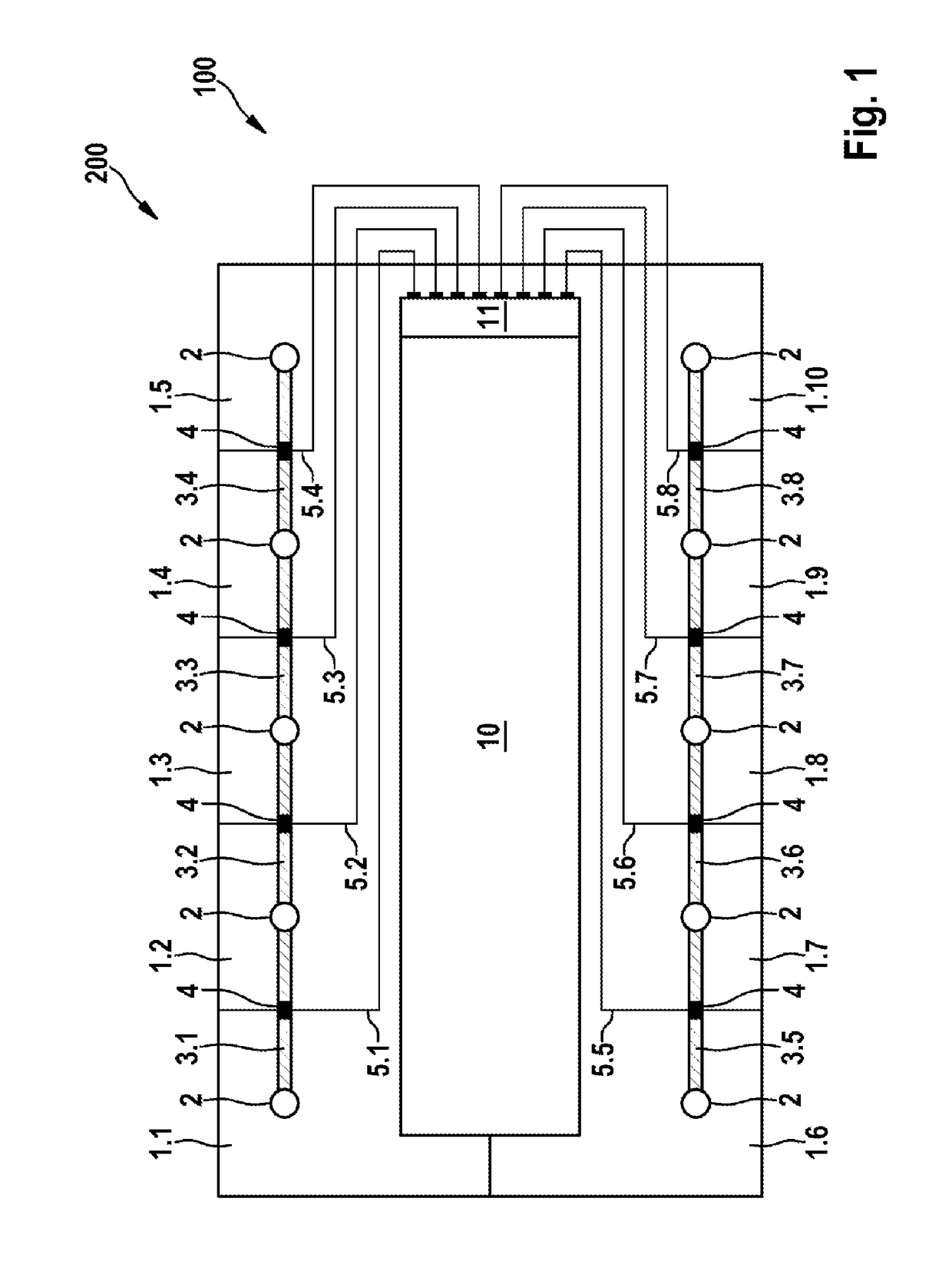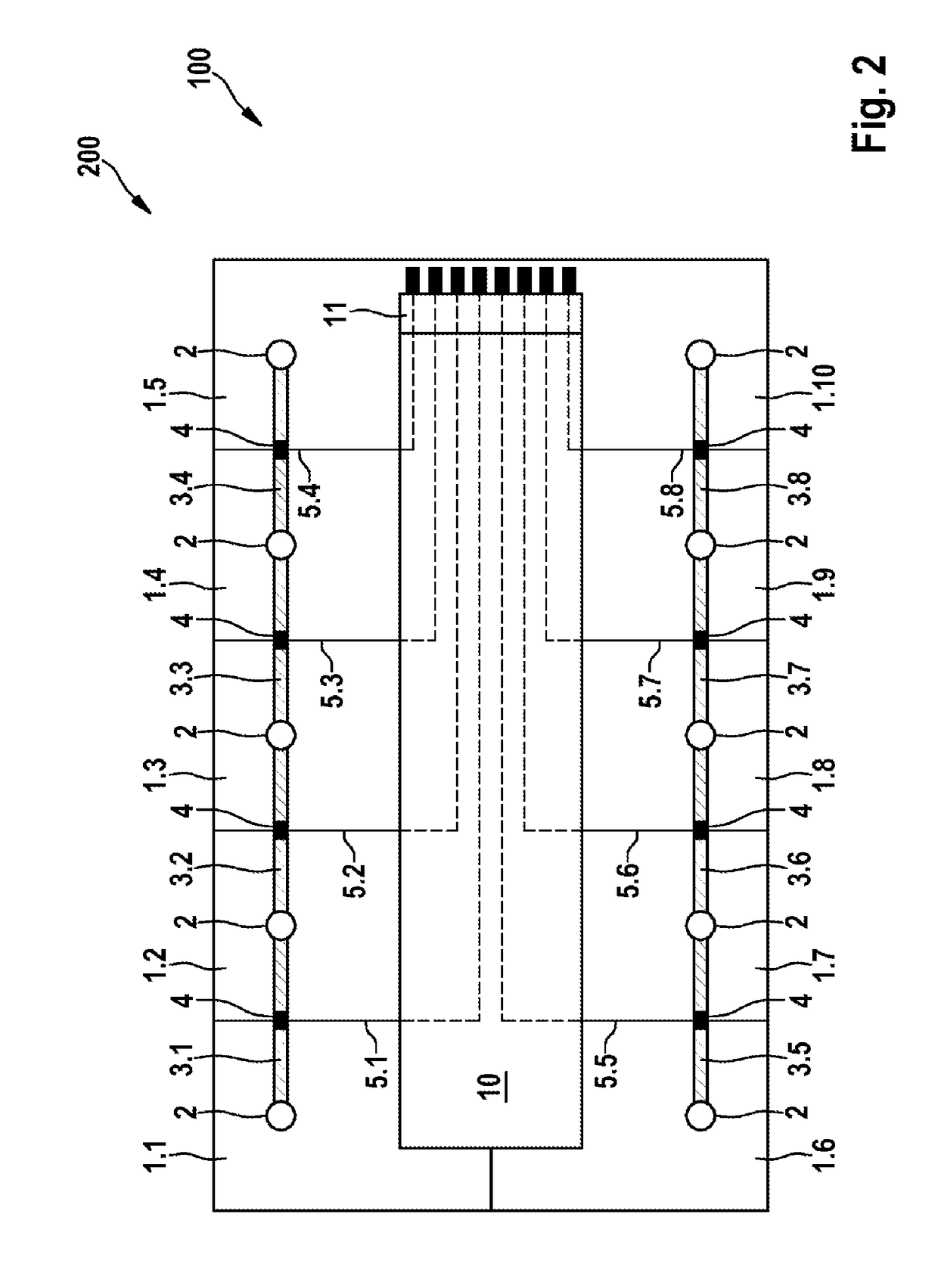Transmitting device for transmitting electrical signals from at least one galvanic cell to at least one electronic evaluating unit
a technology of electrical signals and transmission devices, which is applied in secondary cells, battery services/maintenance, cell components, etc., can solve the problems of low robustness, damage to bonding wire connections, and even cracking of bonding wire connections
- Summary
- Abstract
- Description
- Claims
- Application Information
AI Technical Summary
Benefits of technology
Problems solved by technology
Method used
Image
Examples
Embodiment Construction
[0027]Elements having the same function and action are each provided with the same reference symbols in FIGS. 1 and 2.
[0028]FIG. 1 shows an embodiment of a rechargeable energy storage unit 200 that has a plurality of galvanic cells 1.1 to 1.10 that are connected up to one another in the form of a cell module and particularly a battery cell module or storage battery cell module. Each galvanic cell 1.1 to 1.10 has at least two terminals 2, only one terminal 2 of each galvanic cell 1.1 to 1.10 being visible in FIG. 1. The reason for this is that particularly the electronic evaluation unit 10 is arranged above the individual galvanic cells 1.1 to 1.10, and consequently conceals one of the two terminals 2 of each galvanic cell 1.1 to 1.10. The galvanic cells 1.1 to 1.10 are connected up to one another by appropriate cell connecting elements 3.1 to 3.8 in order to transmit electric power to one another. The cell connecting elements 3.1 to 3.8 extend between the terminals 2 of the individu...
PUM
| Property | Measurement | Unit |
|---|---|---|
| distance | aaaaa | aaaaa |
| electric | aaaaa | aaaaa |
| electrical | aaaaa | aaaaa |
Abstract
Description
Claims
Application Information
 Login to View More
Login to View More - R&D
- Intellectual Property
- Life Sciences
- Materials
- Tech Scout
- Unparalleled Data Quality
- Higher Quality Content
- 60% Fewer Hallucinations
Browse by: Latest US Patents, China's latest patents, Technical Efficacy Thesaurus, Application Domain, Technology Topic, Popular Technical Reports.
© 2025 PatSnap. All rights reserved.Legal|Privacy policy|Modern Slavery Act Transparency Statement|Sitemap|About US| Contact US: help@patsnap.com



